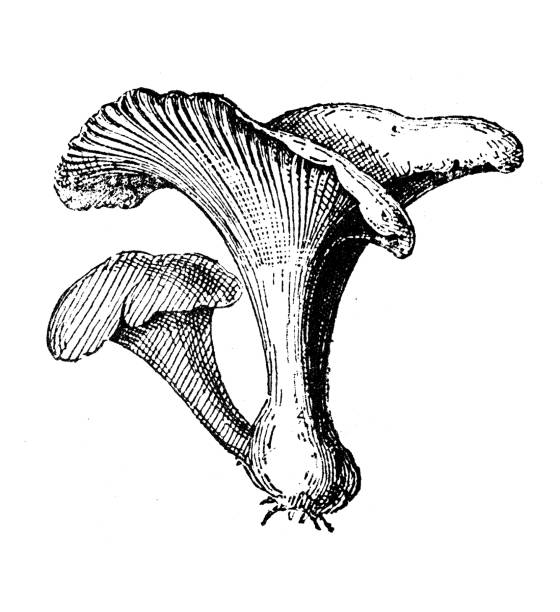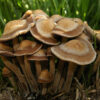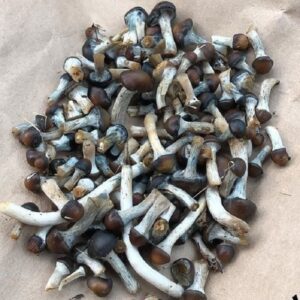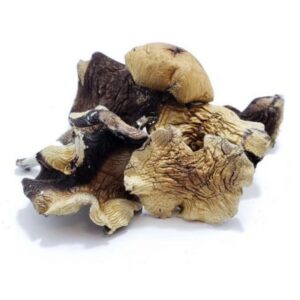Gymnopilus Luteofolius For Sale
£265.00
Gymnopilus Luteofolius
Gymnopilus luteofolius was originally described by Charles Peck in 1875 when it was named Agaricus luteofolius. It was then re-named in 1887 by Pier Saccardo as Pholiota luteofolius before gaining its current name in 1951 by Rolf Singer.
It is widely distributed and often found in dense clusters growing on deadwood. In East America it grows from Summer until Fall, and on the West and North coast of America, it can also be found in Winter. It can be quite striking in appearance and is also known as yellow-gilled gymnopilus and rarely the golden-gilled gymnopilus.
This mushroom can be distinguished by its very bitter taste, and the color of the flesh turns purple or pink when sliced. Gymnopilus luteofolius contains psilocybin, a naturally occurring psychedelic. Once administered
psilocybin is rapidly metabolized into a drug that acts on the serotonin receptors in the brain, this may result in visual and auditory hallucinations, a distorted sense of time, feelings of euphoria and spiritual experiences. The effects will be dose-dependent, and the level of psilocybin found in Gymnopilus luteofolius has not been documented.Gymnopilus Luteofolius For Sale
Cap: 2 to 12cm in diameter; convex becoming flattened with age. Incurved margin becoming decurved with age. Flesh thinner at the margin. Small fibrillose scale covering; variable colors: purple-red fading to yellow or pink in places. May develop green (sometimes blue) spots
Gills: Notched to adnate. Pale yellow turning darker with maturity; eventually, rusty brown as spores develop. Young gills covered by thin and partial veil.
Stem: 3 to 10cm tall; 5mm thick. Usually equal but maybe larger at same. Flimsy ring. Same color as cap.
Smell: Mild and not distinctive.
Taste: Very bitter.
Spores: Warted spores; elliptical
Spore color: Rusty brown to orangey brown.
Edibility: Reports are that it is hallucinogenic if eaten.
Habitat: Saprotrophic. Grows on woodchips, hardwoods and conifers; can be found in dense clusters. Summer to Winter, depending on location. Distributed widely in North America. Found in Eastern and Western areas also.
Scientific classification: Phylum: Basidomycota; Class: Agaricomycetes; Order: Agaricales; Family: Hymenogastraceae; Genus: Gymnopilus and Species: luteofolius.
Be the first to review “Gymnopilus Luteofolius For Sale” Cancel reply
Related products
Mushrooms
Mushrooms
Mushrooms
Mushrooms
Mushrooms
Mushrooms
Mushrooms
Mushrooms












Reviews
There are no reviews yet.